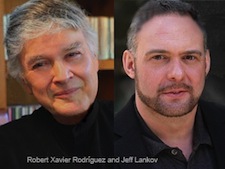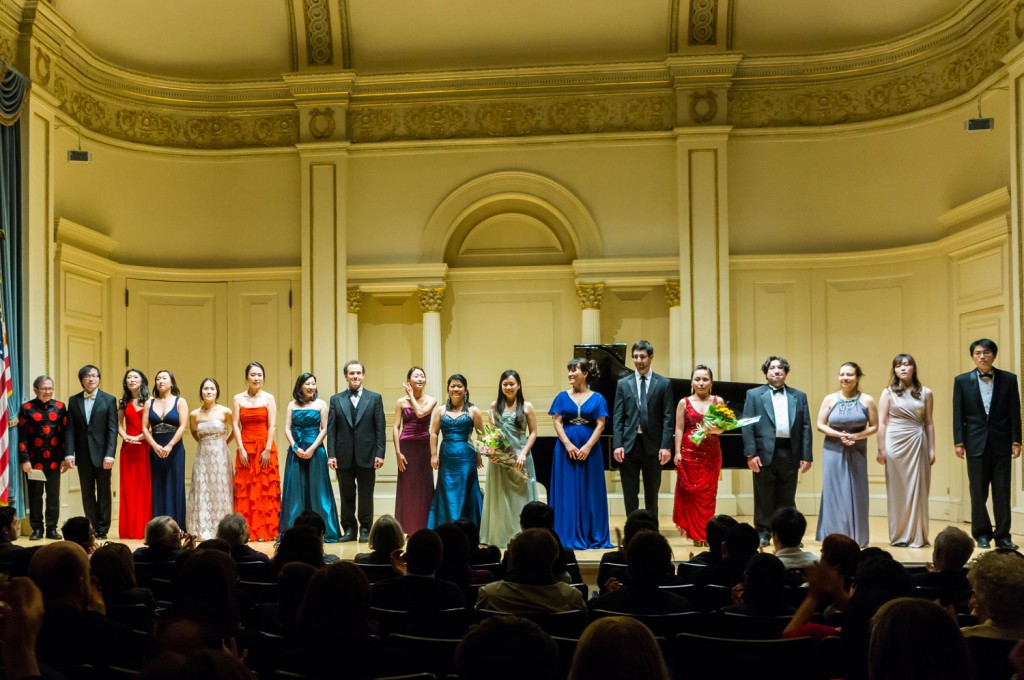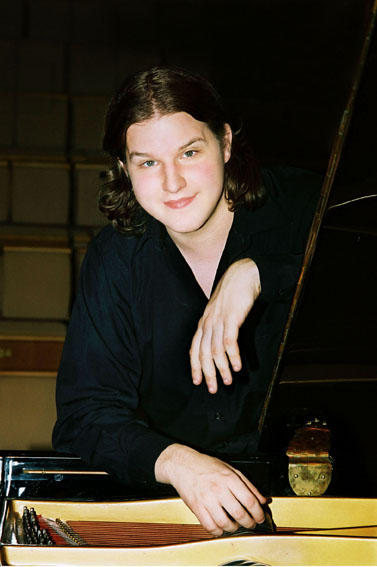The name Robert Xavier Rodriguez (b. 1946) is hardly unknown in the music world, with an imposing list of worldwide commissions, performances, and other successes filling his biography, but a recent recital of his piano works had this listener convinced that his musical reach is destined to grow far greater still. Currently Professor at The University of Texas at Dallas (among other career demands), he has amassed commissions and residencies with many of the world’s most renowned symphonies and opera organizations, awards galore (Guggenheim, ASCAP, NEA, American Academy and Institute of Arts and Letters, etc.), a long string of record labels and artists presenting his music, and exclusive publication by G. Schirmer. Such biographical information generally serves to “sell” an artist, but in Mr. Rodriguez’s case his music speaks for itself; moreover, the organizations mentioned among his credits may be the ones basking in reflected glory. Listening to this gifted composer, who has been outstanding in his field for decades now, one even begins wondering why certain accolades are missing – Pulitzer committee, where are you?
Part of what sets Mr. Rodriguez’s musical voice apart from others is its directness of expression, vibrant, unpretentious, lyrical, and often humorous, without sacrificing substance or craft. Though there was a liberal sprinkling of modern ragtime throughout the recital, that style predilection did not limit the emotional range (any more than with William Bolcom and others drawn to the genre) – and certainly all was not based on rags. The balance between accessibility and exploration was just right. In darker inspirations, such as the closing work “Caprichos” (2012), based on some rather unsettling Goya artworks, the tonal language was uniquely chilling and nightmarish, yet always with a life-affirming joy in the storytelling itself. Given its World Premiere here, it is a fascinating, thorny, and demanding work, which I look forward to hearing again. Drawing from a variety of musical resources (including fitting references to Scarlatti and Mozart), it is unquestionably fresh and new, a valuable addition to the piano literature (and for pianists, a natural to pair with “Goyescas” of Granados as a bonus).
Bringing the musical storytelling and imagery to life was pianist Jeff Lankov, who sustained musical interest from the recital’s first notes to its last in performances of brilliance and dedication. To open, he teamed up with the composer in Semi-Suite (1980) for piano, four-hands, an appealing work as full of fun as its punning title. Its four movements (the first one repeated as a fifth) include “The All-Purpose Rag” and “Limerick” (ingenious pieces after which the audience had to laugh out loud), plus a delightful Jig and Tango. The players projected the tongue-in-cheek references and musical “punch lines” with wonderful deadpan delivery, as Lankov continued to do in “Estampie” (1981), which also contained several ragtime-inspired movements. Lest one underestimate the substance of the latter (with titles including “The Slow Sleazy Rag”, “The Couple Action Rag”, and “Reversible Rag”), the seven-movement work is actually a wide ranging set of variations with considerable lyrical beauty as well as stimulating formal challenges. As the Program Notes for one movement state: “In a complex Scherzo, the regular rhythm of the estampie is sharply juxtaposed with disjunct atonal writing. Ragtime rhythms appear, treated with Ars Nova discant and isorhythm techniques in a synthesis of widely disparate styles, after which the estampie reappears.” All of this intricacy made for challenging listening as well as playing, and Mr. Lankov was the man for the job. A veteran of new music performance whose repertoire includes the complete works of John Adams, plus Michael Finnissy, Messiaen, Piazzolla, Radiohead, and more, he embraces it all. There seems to be nothing that eludes his grasp. His performance of Rodriguez’s tour de force “Fantasia Lussuriosa” (1989) was particularly compelling, with its seductive lines, decadent melodic embroidery, and all-encompassing virtuosity. It is hard to believe there are not more young pianists pouncing on this piece as a “vehicle.” Mr. Lankov played it to the hilt, yet there seems to be enough flexibility in it to elicit many additional interpretations.
In another note of levity, the second half opened with a selection entitled “Hot Buttered Rumba” from Aspen Sketches (1992). The title as well as the infectious rhythms had many smiling. Despite prodigious skill, Mr. Rodriguez’s sense of humility and humor are never far. We may credit some of Rodriguez’s humor to the encouragement of his great teachers, Nadia Boulanger. In his words, “Boulanger told me that I would only be half a composer until I also learned to express in my music the same love of laughter that she knew I enjoyed as a person.” She would be proud.
In a possible nod to another of Rodriguez’s teachers, Jacob Druckman, the recital also included Rodriguez’s “Seven Deadly Sequences” (1990), an imaginative and highly pianistic set, which should keep pianists enthralled for years to come. Though not mentioned in the program notes on the piece, Druckman’s own piano set entitled “The Seven Deadly Sins” is similarly vivid and evocative. They would make an interesting pairing, perhaps on disc.
On the subject of discs, one reads in Jeff Lankov’s biographical notes that a recording of this recital’s music is in the works. One can only rejoice. Look out for it.



